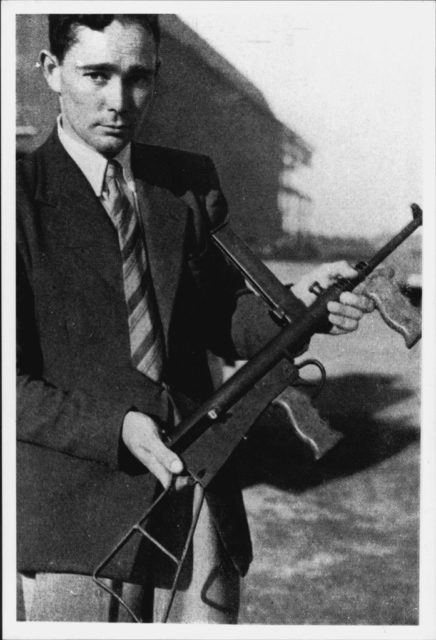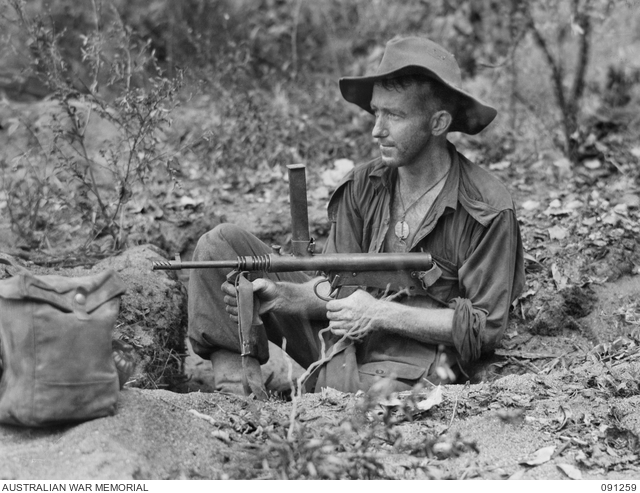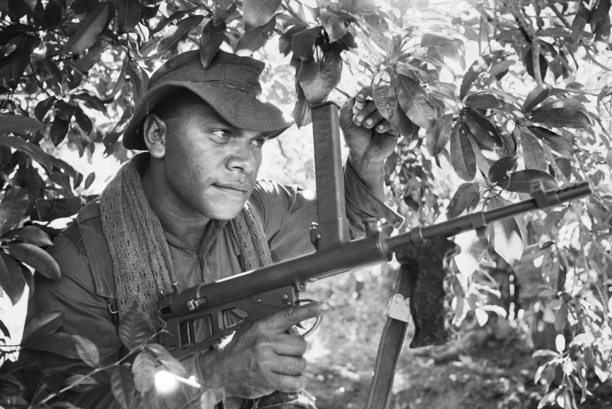The Owen Gun Was Favored By Australian Troops for Its Reliability In the Pacific Theater
If there’s one thing Australia isn’t known for, it’s weapons development. That’s not to say some ingenious firearms haven’t come out of the country. During the Second World War, the Australian Army introduced the Owen gun, known officially as the Owen machine carbine, into service, and it was so beloved by those in the field that it was equipped until the end of the Vietnam War.
Development of the Owen gun

The Owen gun was developed by a relatively young designer by the name of Evelyn Owen. Coming up with the idea in 1931, he didn’t complete his first prototype until seven years later. The automatic carbine chambered .22 LR ammunition in a drum-type magazine, which proved ineffective, as the magazine couldn’t be reloaded or changed. On top of this, the weapon featured a thumb trigger, as opposed to a traditional one.
The design was rejected upon it being submitted for consideration to the Australian military. At the time, the country’s armed forces was awaiting the completion of the STEN, a British submachine gun that went on to see service throughout World War II and beyond.
In May 1940, Owen enlisted in the Second Australian Imperial Force (AIF). He was about to be deployed to the Middle East when the manager of the Lysaght manufacturing plant, Vincent Wardell, showed an interest in his design. This led to Owen’s discharge from the military in June 1941, allowing him to focus on refining and producing the submachine gun.
Owen adapted the weapon to fire .32 ACP and .45 ACP rounds, before settling on the 9 x 19 mm Parabellum. Production occurred at factories in Newcastle and Port Kembla, with between 45,000 and 50,000 being manufactured from 1942-45. So many units were produced because manufacturing costs were cheap and the basic structure fit with Australia’s industrial industry at the time.
Owen gun specs

The Owen gun underwent testing in September 1941, with the Australian military pitting it against the US Thompson and British STEN submachine guns. It immediately showed that it was the ideal weapon for combat in jungle and sandy conditions. Whereas the Thompson and STEN stopped working when dirt got into them, the Owen remained operational, thanks to its unique design.
Weighing 4.86 kg when loaded and measuring 32 inches in length, the Owen gun featured a simple blowback design intended to allow firing from the shoulder or hip. It was immediately recognizable in the field, as its appearance greatly differed from similar submachine guns.
Its 33-round detachable magazine was top-mounted, allowing gravity to aid in pushing cartridges down to the breech. This also meant dirt and other debris would immediately fall out or be pushed out by the magazine spring. As the magazine was at the top of the weapon, the iron sight was side-mounted on the left. While this was fine for right-handed operators, it meant those who were left-handed couldn’t operate the gun.
Like the STEN, the Owen gun featured a non-folding wire buttstock, which was removable. It also had pistol grips like the Austen submachine gun, which itself was derived from the STEN. In terms of power, the weapon could fire an incredible 700 rounds per minute, at a velocity of 366 meters per second. While most effective at 123 meters, the Owen could hit targets up to 200 meters away.
Nicknamed the ‘Digger’s Darling’ by Australian soldiers

The Owen gun was equipped by the Australian Army from 1942-71. During the Second World War, it was primarily used by troops fighting the Guadalcanal and Solomon Islands campaigns, who nicknamed it “Digger’s Darling” for its reliability. In fact, it was so reliable that soldiers credited the weapon with saving their lives in battle.
American Gen. Douglas MacArthur of the South West Pacific Area (command) was so impressed with the gun that he contracted 60,000 for his own troops. However, Australia was unable to accept the large order, due to a lack of necessary machinery and raw materials.
More from us: The Soviet Maxim-Tokarev Light Machine Gun Outperformed the Classic PM M1910
Following WWWII, the Owen gun saw use in both Korea and Vietnam, as well as during the Rhodesian Bush War and Malayan Crisis. In 1971, it was largely replaced by the Australian-produced F1 submachine gun and, later, the M16 rifle.
The post The Owen Gun Was Favored By Australian Troops for Its Reliability In the Pacific Theater appeared first on warhistoryonline.
Post a Comment
0 Comments